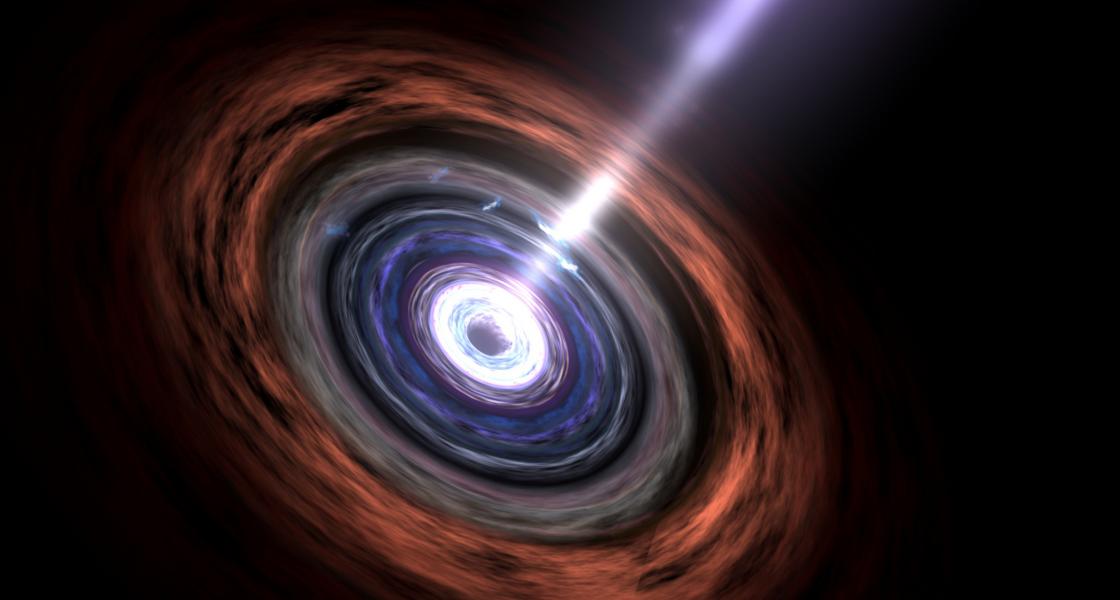Research associate Bruno Giacomazzo recently studied the effects of magnetic fields and matter on the likelihood that the merger of two black holes will produce jets of light of different frequencies ranging from radio waves to X-rays. If such signals are generated, it may be possible to detect them with ground- or space-based observatories. Their detection would help astronomers identify and study the unions of supermassive black holes that occur after galaxies collide. Supermassive black holes are found at the centers of most galaxies in the Universe.
The exciting news is that electromagnetic signals are likely generated during some black-hole mergers, according to Giacomazzo and his colleagues from the University of Maryland and the NASA Goddard Space Flight Center. The researchers recently performed sophisticated simulations of the behaviors of magnetized plasmas interacting with magnetic fields around merging supermassive black holes.
The researchers discovered that during such a merger, interactions with a plasma increased the strength of magnetic fields a hundredfold. This increased magnetic-field strength, in turn, led to electromagnetic signals that were as much as ten thousand times stronger than previous estimates, which had not taken account of nearby plasmas and magnetic fields.
The new work means astronomers may soon be able to locate and identify jets of light emitted during black-hole mergers. Sometime in the future, however, astronomers may also be able to look for the gravitational waves produced in black-hole mergers — if and when a gravitational-wave observatory, such as the proposed Laser Interferometer Space Antenna (LISA), is launched.
An orbiting observatory that can detect gravitational waves together with observations of the predicted electromagnetic signals could help astronomers pinpoint the exact locations of black-hole mergers. Observations of jets of electromagnetic radiation and gravitational waves emitted from the same merger may also help scientists to investigate conditions around the newly merged system and determine whether gravitational waves travel exactly at the speed of light. The possibilities are mind-boggling.



 The Physics Frontiers Centers (PFC) program supports university-based centers and institutes where the collective efforts of a larger group of individuals can enable transformational advances in the most promising research areas. The program is designed to foster major breakthroughs at the intellectual frontiers of physics by providing needed resources such as combinations of talents, skills, disciplines, and/or specialized infrastructure, not usually available to individual investigators or small groups, in an environment in which the collective efforts of the larger group can be shown to be seminal to promoting significant progress in the science and the education of students. PFCs also include creative, substantive activities aimed at enhancing education, broadening participation of traditionally underrepresented groups, and outreach to the scientific community and general public.
The Physics Frontiers Centers (PFC) program supports university-based centers and institutes where the collective efforts of a larger group of individuals can enable transformational advances in the most promising research areas. The program is designed to foster major breakthroughs at the intellectual frontiers of physics by providing needed resources such as combinations of talents, skills, disciplines, and/or specialized infrastructure, not usually available to individual investigators or small groups, in an environment in which the collective efforts of the larger group can be shown to be seminal to promoting significant progress in the science and the education of students. PFCs also include creative, substantive activities aimed at enhancing education, broadening participation of traditionally underrepresented groups, and outreach to the scientific community and general public.